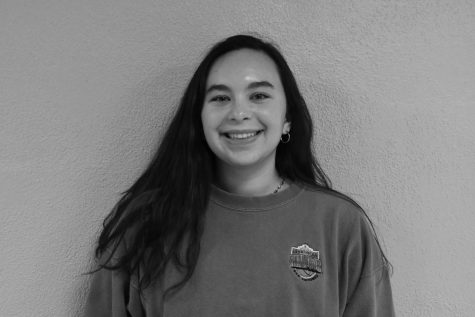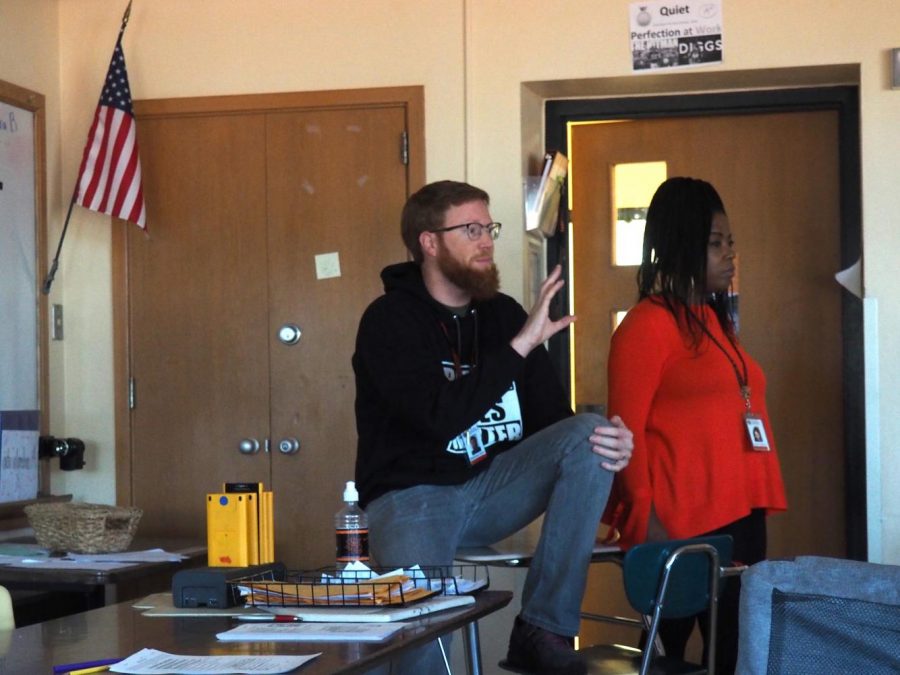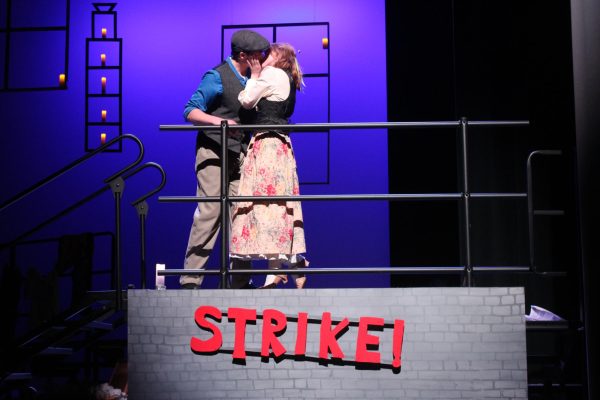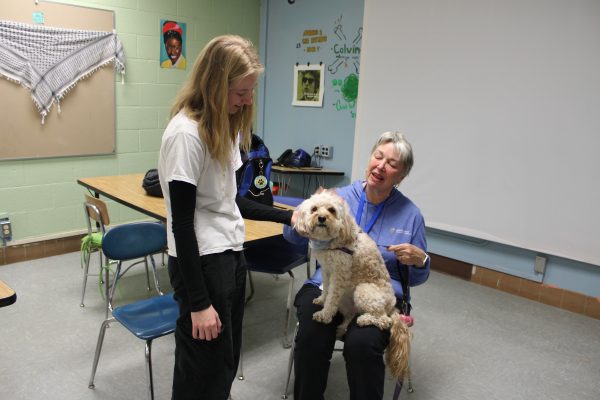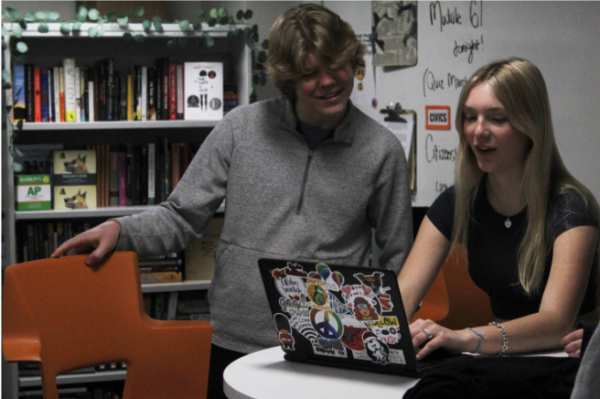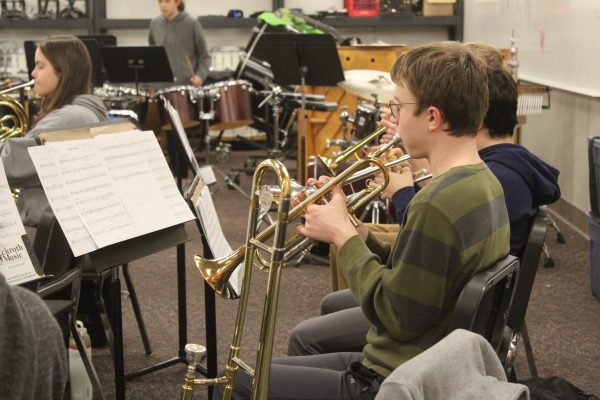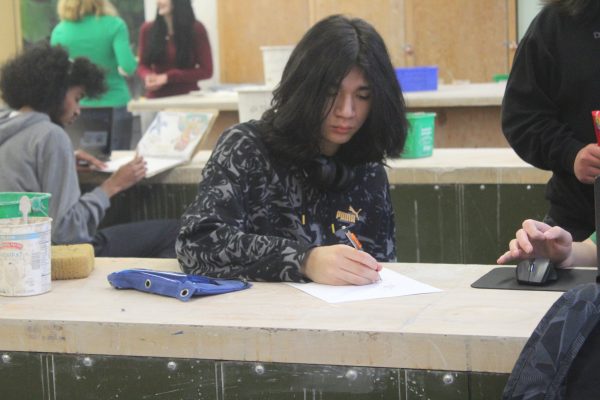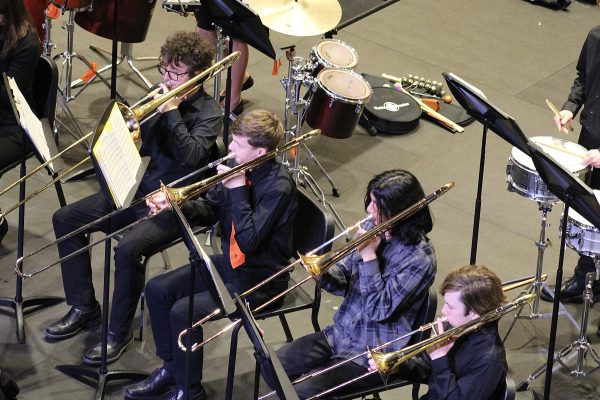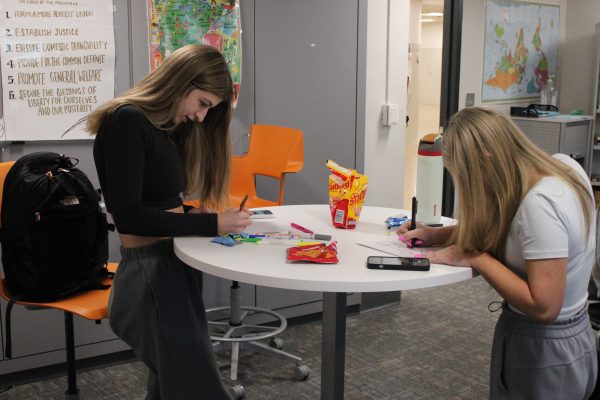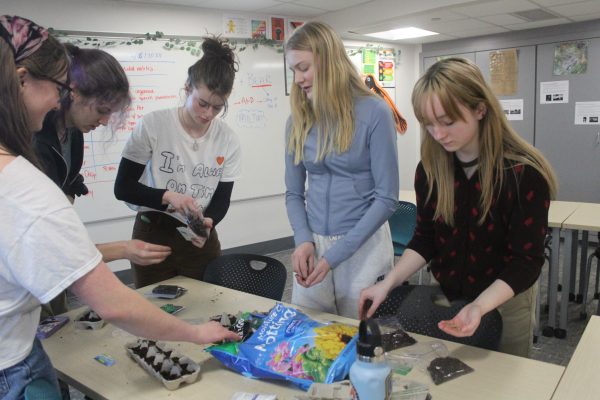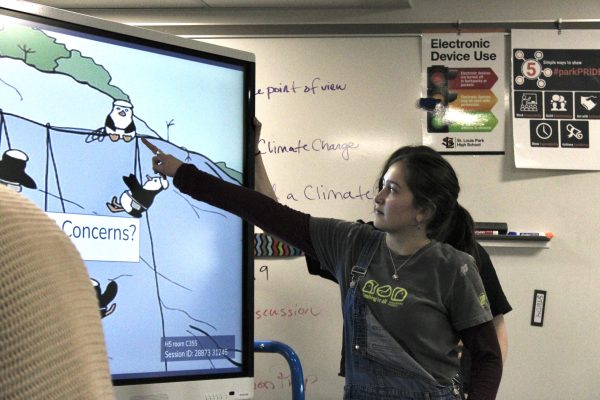Teachers incorporate social justice into classes
Math department strays away from tradition
Race equity coaches Leeann Stephens and Matthew Horel lead a class discussion reflecting on the movie 13th on Oct. 13.
According to AP calculus teacher Erik Ahlquist, math can help prevent injustice by informing students of real events and situations.
“What I think the main thing they should do is know (that social injustice) is there and if they hear about it when they’re an adult and can make policy changes or can affect change, that they look at something objectively,” Ahlquist said.
To prevent students from losing interest in math class, pre-calculus and geometry teacher Meredith Webster said adding real life topics into her class curriculum benefits students.
“We are trying to incorporate projects that are going to allow us to analyze social justice topics through a mathematical lens,” Webster said. “That means we are looking at it (social justice) very analytically and trying to come up with what does the data show us and discussing what we see in that.”
Pre-calculus teacher Sarah Huesing said the social justice project reinvents how students look at math by incorporating current events and real world statistics.
“I think you guys have probably sat in enough math classes where you’re like, ‘sweet, I’m glad he went to the store and picked up eight oranges and four apples, that’s awesome’ but I also think it’s important to take a look at real data as well,” Huesing said.
According to AP calculus teacher Erik Ahlquist, when students look at the incarceration rates for drug abuse in the U.S. they have found that similar crimes result in conflicting punishments.
“I’ve taken something like sentences for different crimes and looked at them mathematically and done the calculations to determine whether they’re fair,” Ahlquist said. “One of the findings is, if you look at the discrepancies between sentences for having crack cocaine and, powder cocaine is way out of whack.”
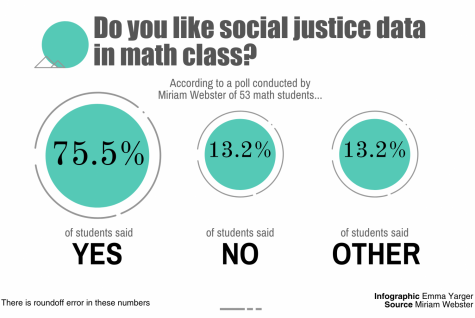 Junior Jada Witherspoon said she enjoyed the social justice project and how it opened discussions about arrest rates.
Junior Jada Witherspoon said she enjoyed the social justice project and how it opened discussions about arrest rates.
“I liked (the project), I thought it was a really great outlook on the graphs. I guess you would think that more of the African American population is arrested, but that’s because (police) are purposely attacking (African Americans) to get arrests,” Witherspoon said. “I think I would like to do (the social justice unit) again.”
Webster said the topics taught in this project have been inspired by other educators in the Twin Cities.
“(Teachers at Minneapolis South) are doing some really interesting stuff in their classrooms to try to engage students in mathematics in different ways,” Webster said.
Pre-calculus teacher Amanda Forsberg said the department includes this project to show students how math is used in real life.
“(We want students) to realize that math isn’t just doing equations all the time that you can actually use numbers to support or disprove claims,” Forsberg said. “This classroom isn’t an isolated box.”
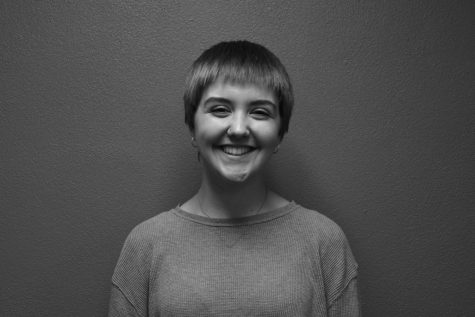
Hi queens! I am Emma Yarger and I’m one half of an epic copy editor duo. I am a senior this year and it is my second year writing for the Echo. I enjoy...



